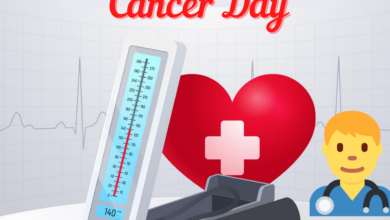10 Advantages of an Intelligent Transportation System

Everything is changing in the transport system with the vision of smart cities by turning them into digital communities. The transport system is the heart of economic growth, from getting people to work and children to schools and transportation of basic needs. The Intelligent Transportation System (ITS) aims to increase traffic efficiency and improve safety and mobility by applying analysis, control, and communication technologies to hold down transportation.
To understand the advantages of an intelligent transportation system, we must look at some of the innovations made in the ITS world. So, let’s look at the benefits of superior technologies of ITS.
Intelligent Speed Assistance (ISA)
Using GPS-linked speed limit data or video camera technology, Intelligent Speed Assist assists drivers in maintaining the prescribed speed limit. ISA will often warn when the automobile is nearing or exceeding the speed limit.
ISA may sometimes serve as a speed limiter that automatically adjusts speed, preventing the motorist from going beyond the posted limit.
The four main types of ISA include:
- Cascaded Acoustic Warning
- Speed Control Function:
- Cascaded Vibrating Warning
- Haptic Feedback
All the systems are complemented by a visual display that informs the driver of their speed with respect to the recommended limits.
Ramp Meters
Ramp meters are traffic signals on the freeway on-ramps that navigate between red and green lights to regulate the flow of cars entering freeways. The ramp meters can be altered depending on traffic conditions. For example, it breaks the traffic and prevents platoons when merging into the highway.
Ramp metering smoothens the flow of traffic. A smooth traffic flow helps in environmental conservation by reducing tailpipe emissions from burning fuel. Some states have also installed HOV lanes that allow high occupancy vehicles to skip traffic.
Electronic Toll Collection (ETC)
ITS has advanced to the point of introducing automated systems that have improved payment collection in toll plazas. As a result, they have increased convenience and efficiency in toll collection.
The systems include transponders mounted on cars identified by electronic readers specifically dedicated to toll plazas which helps to increase mobility.
Adaptive Traffic Signal Coordination
ITS has also introduced adaptive traffic signal technologies to enhance the ability to integrate multiple intersections in traffic. Therefore, it improves the operation of numerous directional movement vehicles in a traffic system.
Intelligent transportation systems companies introduced traffic control stripping supplies which help you mark the busy streets and keep sites safe. They also help mark off certain parking areas for designated usage.
Introducing traffic control devices and software is designed to control even the busiest streets in a local city or a busy airport. An example is Adaptive Control Software Lite (ACSLite) which has traffic sensors that collect data to enhance traffic signal coordination.
Smart Work Zones
Work zones on freeways are inevitable to keep improving the transport systems. They, however, can lead to traffic or safety issues, leading to delays.
ITS has developed systems that include technologies such as queue warning systems. They provide motorists with work zone information ahead of time and come up with alternative routes. As a result, smart work zones increase the safety of work zones and motorists and reduce traffic congestion on freeways.
Red Light Cameras
Red light cameras on pavements on the freeways detect vehicles that pass over sensors after the light has turned red. The sensors are connected to high-speed computers in the traffic system.
The cameras take two photos, one at the front as the vehicle passes and one at the back, to capture the number plate. Traffic police officers later review the cameras, and a citation is sent to the vehicle’s registered owner in case of a violation. Thus, it helps to maintain order in the freeways and avoid incidents.
Electric Vehicles
With electric vehicles taking over the ITS, they have led to many technological innovations. In addition, introducing electric cars has played a significant role in environmental conservation. For example, no fuel consumption means no air pollution.
In the beginning, electric vehicles had the challenge of having few charging stations, especially in public places. However, lately, we have seen an increment in charging stations, and governments are looking to increase the stations since 36 million electric cars will be on the roads by 2040.
Transit Signals
Transit signals are designed explicitly for transit vehicles passing at certain intersections. The transit signal systems detect passing transits and modify signal phasing, which helps to improve efficiency.
Transit signal systems require the coordination of signal agencies and vehicle operators. They increase the green signals when necessary for public transportation. Giving priority to transit vehicles increases flow efficiency at intersections.
Electric/Hybrid Buses
Electric or hybrid buses’ adoption is increasing rapidly and is expected to continue accelerating. Their main advantage is that they have zero emissions and thus reduce pollution. Electric transit buses in the US currently account for 2% of all transit buses.
Hybrid or battery electric buses give a quiet operation and reduce operational costs. Their efficiency has allowed room for the decrease in bus fares, making it affordable to low-class citizens. Electric bus batteries have also dropped in price by over 80% and are expected to continue declining.
Traveler Information Systems
Traveler information systems are in place to support drivers and travelers. They use technologies such as the internet or telephones to help users make informed decisions on traffic, routes, and mode of travel. In addition, information systems provide travelers with information and enhance safety that comes from transparent communication between the traveler or driver and the manager.
Electronic ticketing on transit vehicles has made travel quicker and easier. It also provides information that improves the transportation system.
Smartphones with GPS come with routes, stop locations, and lists of arrival or departure of transit vehicles. This saves time for anyone using public transport.
Conclusion
Intelligent transportation serves as a significant economic boost not only in the US but in other emerging markets as well. Given the opportunity and time to grow, it will take over and become the norm worldwide. Aside from improving the flow of traffic, ITS has played a significant role in making transport affordable for most people. All the innovations will continue to enhance efficiency, and state governments are looking to ensure they work long-term.











